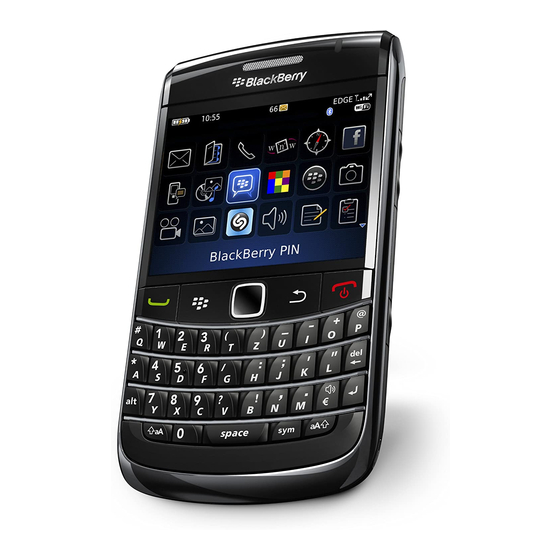underground parking structure or if you are traveling by train or car, might indicate
increased power output from your BlackBerry device as it attempts to connect to a weak
signal.
• Use hands-free operation if it is available and keep the BlackBerry device at least 0.98
in. (25 mm) from your body (including the abdomen of pregnant women and the lower
abdomen of teenagers) when the BlackBerry device is turned on and connected to the
wireless network. For more information about carrying your BlackBerry device, see the
holster information in the "Additional safety guidelines" section of this document.
• Reduce the amount of time spent on calls.
Specific absorption rate data
THIS WIRELESS DEVICE MODEL MEETS GOVERNMENT REQUIREMENTS FOR EXPOSURE TO
RADIO WAVES WHEN USED AS DIRECTED IN THIS SECTION.
The BlackBerry® device is a radio transmitter and receiver. It is designed and manufactured not
to exceed the emission limits for exposure to radio frequency (RF) energy set by the Federal
Communications Commission (FCC) of the U.S. Government, Industry Canada of the Canadian
Government (IC), and recommended by The Council of the European Union when used as
directed in the previous section. These limits are part of comprehensive guidelines and establish
permitted levels of RF energy for the general population. The guidelines are based on standards
that were developed by independent scientific organizations through periodic and thorough
evaluation of scientific studies.
The exposure standard for wireless devices employs a unit of measurement known as the Specific
Absorption Rate, or SAR. The SAR limit set by the FCC/IC is 1.6W/kg*. The SAR limit
recommended by The Council of the European Union is 2.0W/kg**. Tests for SAR are conducted
21

